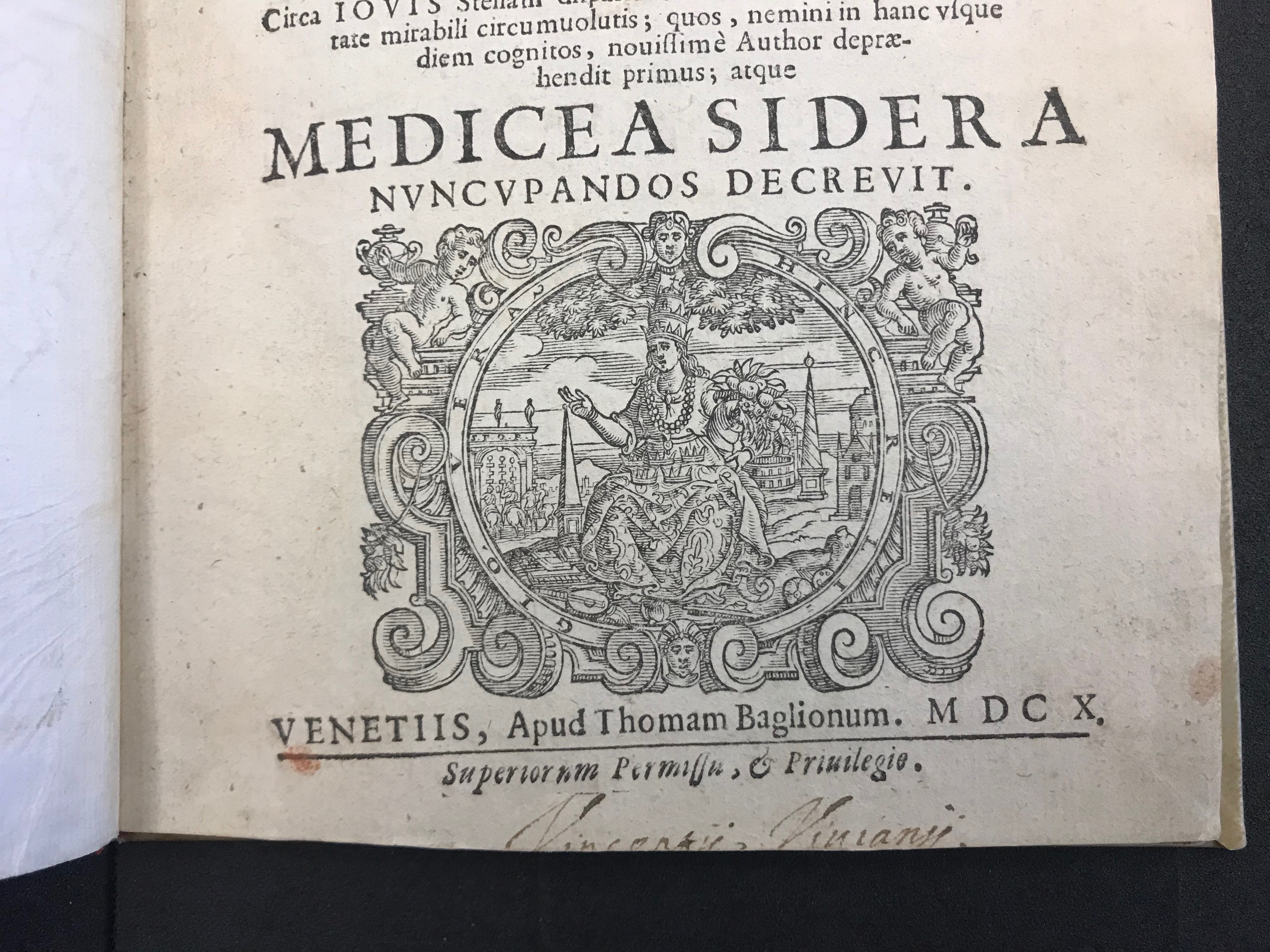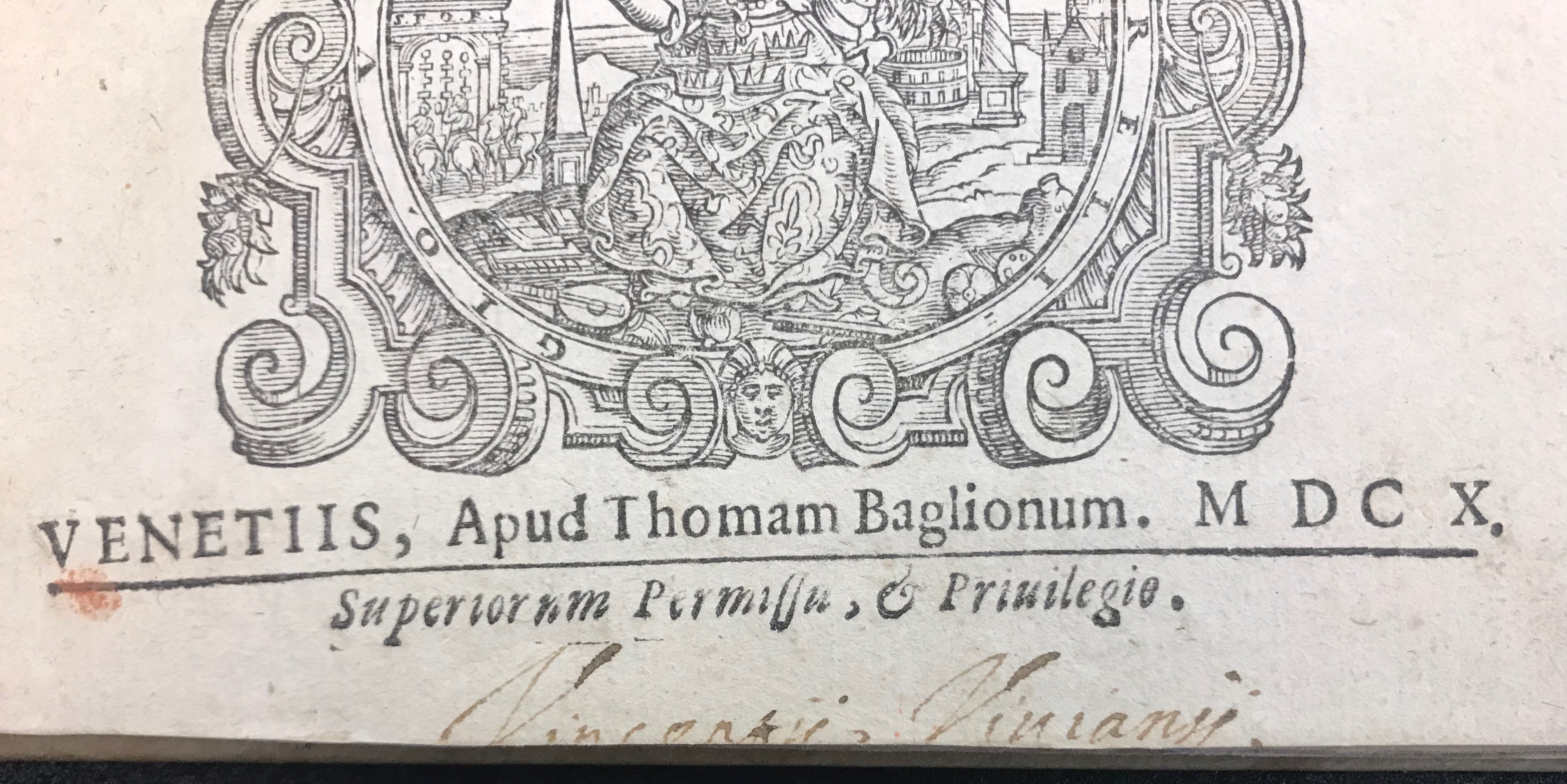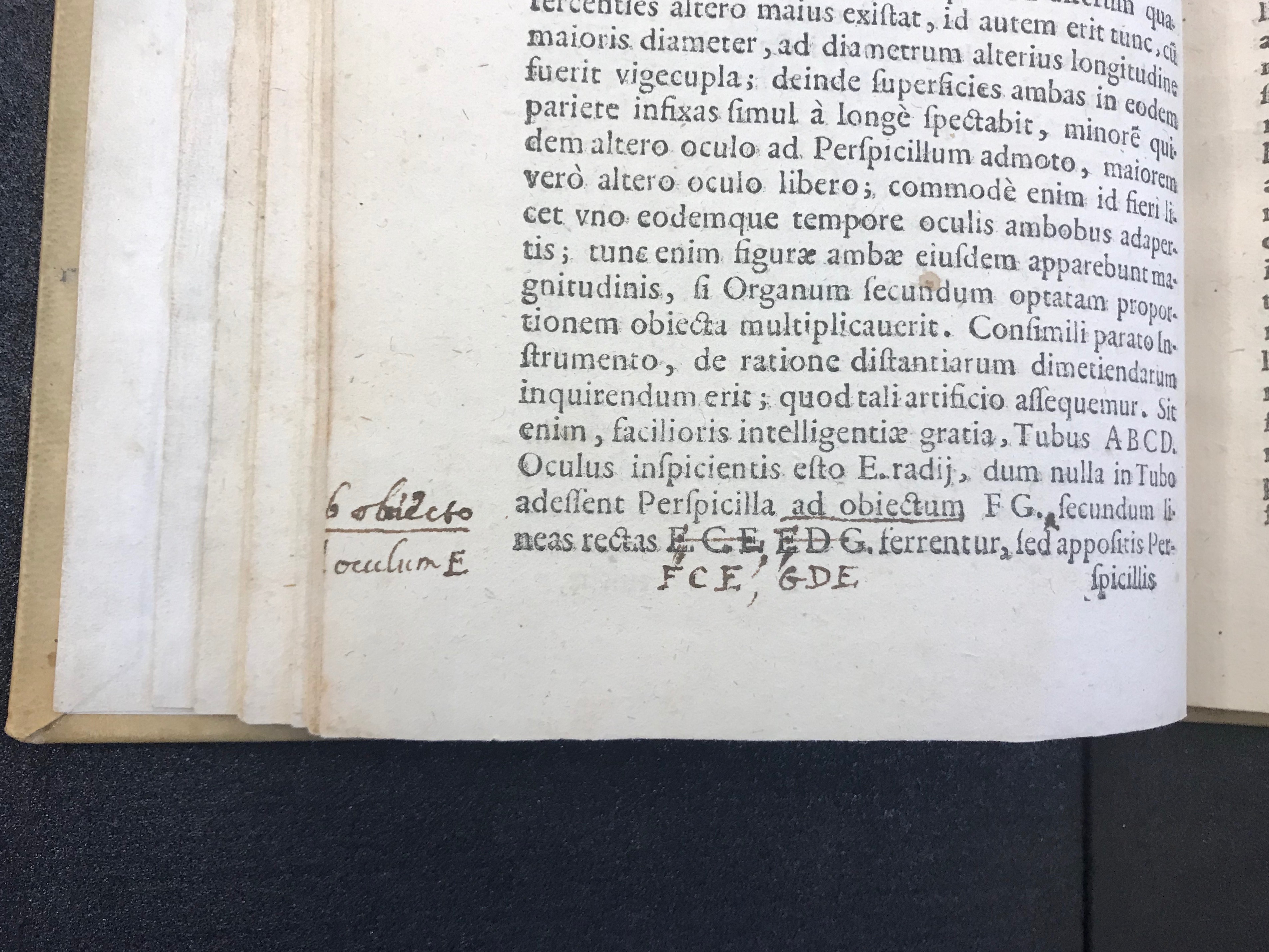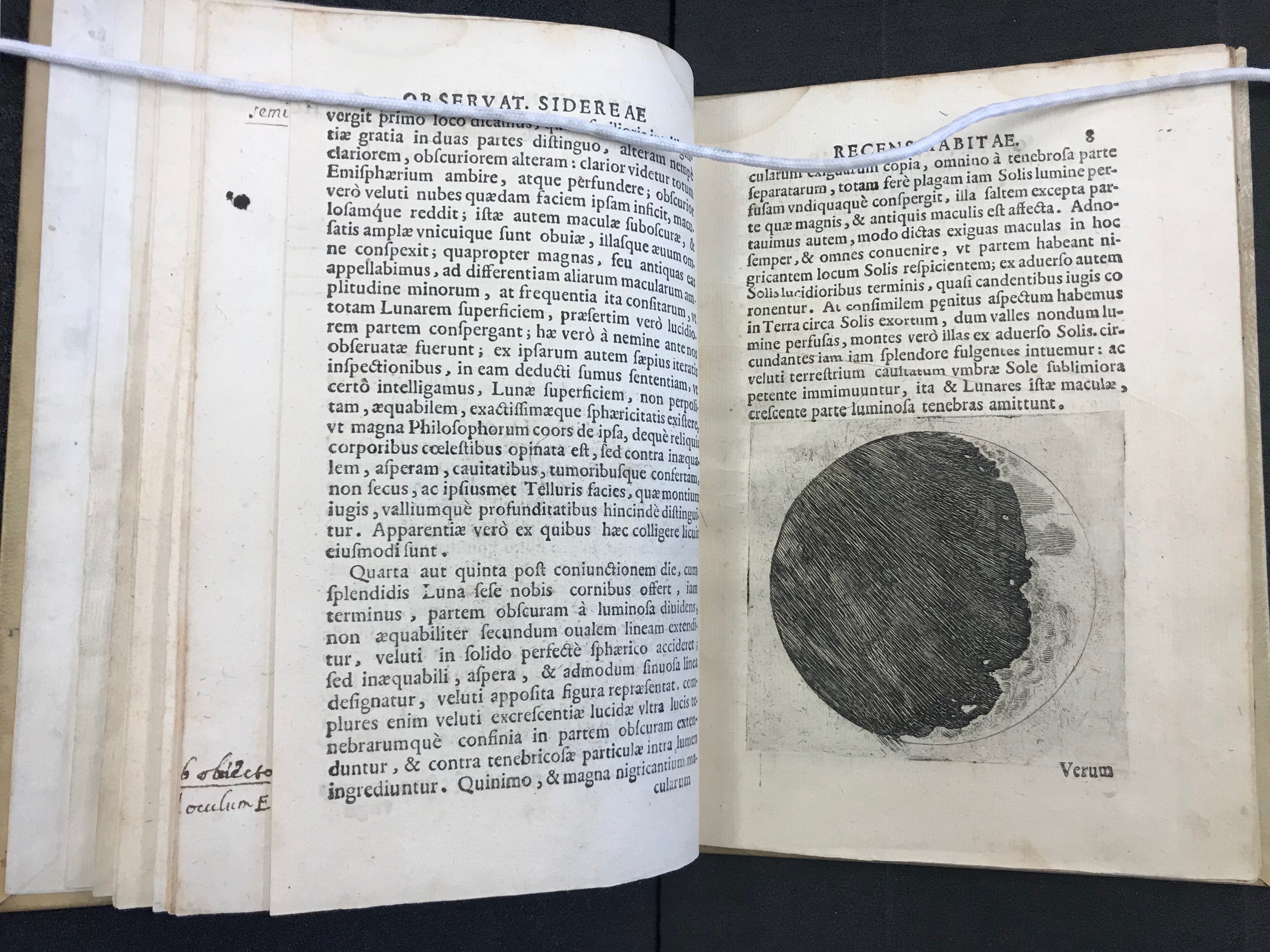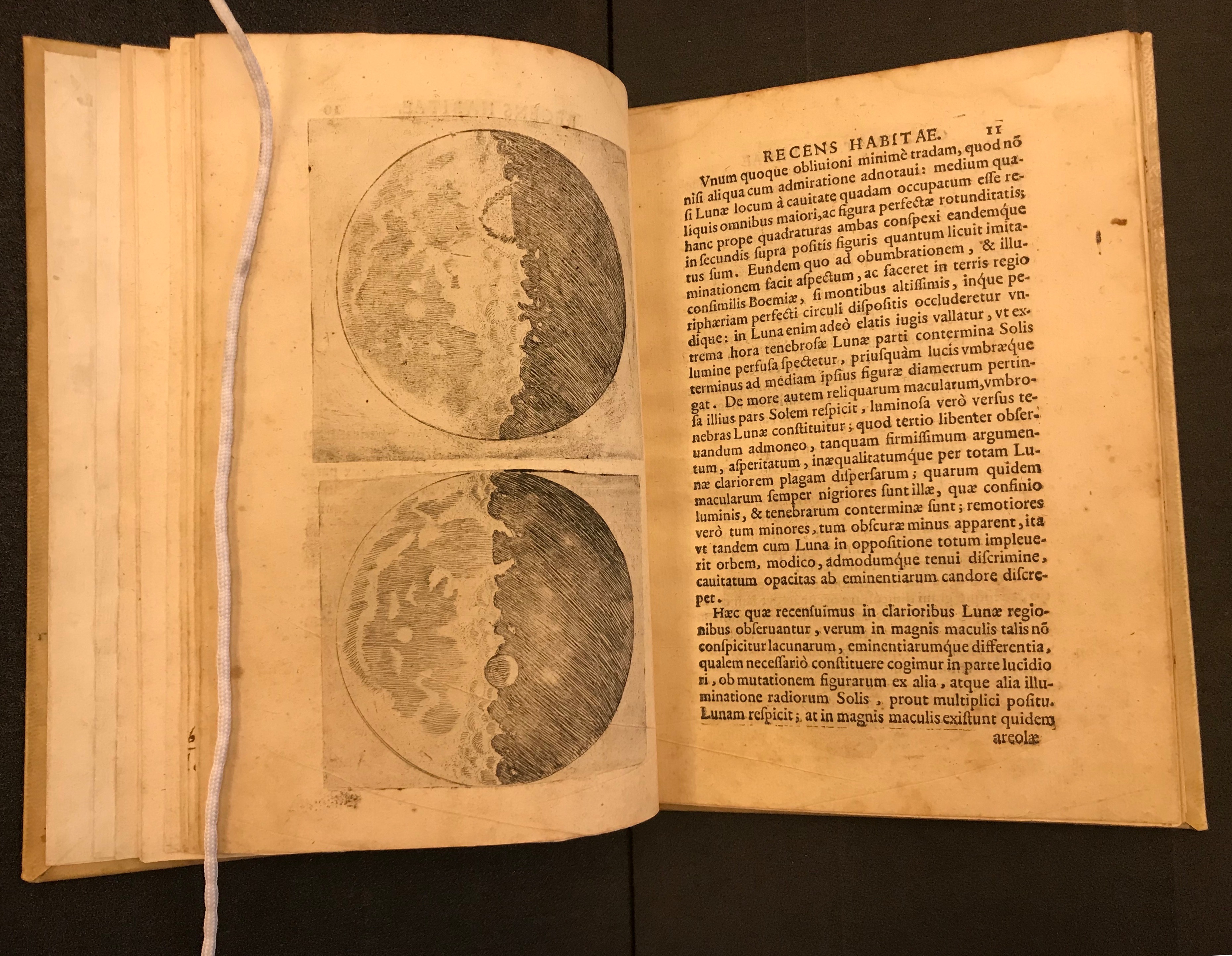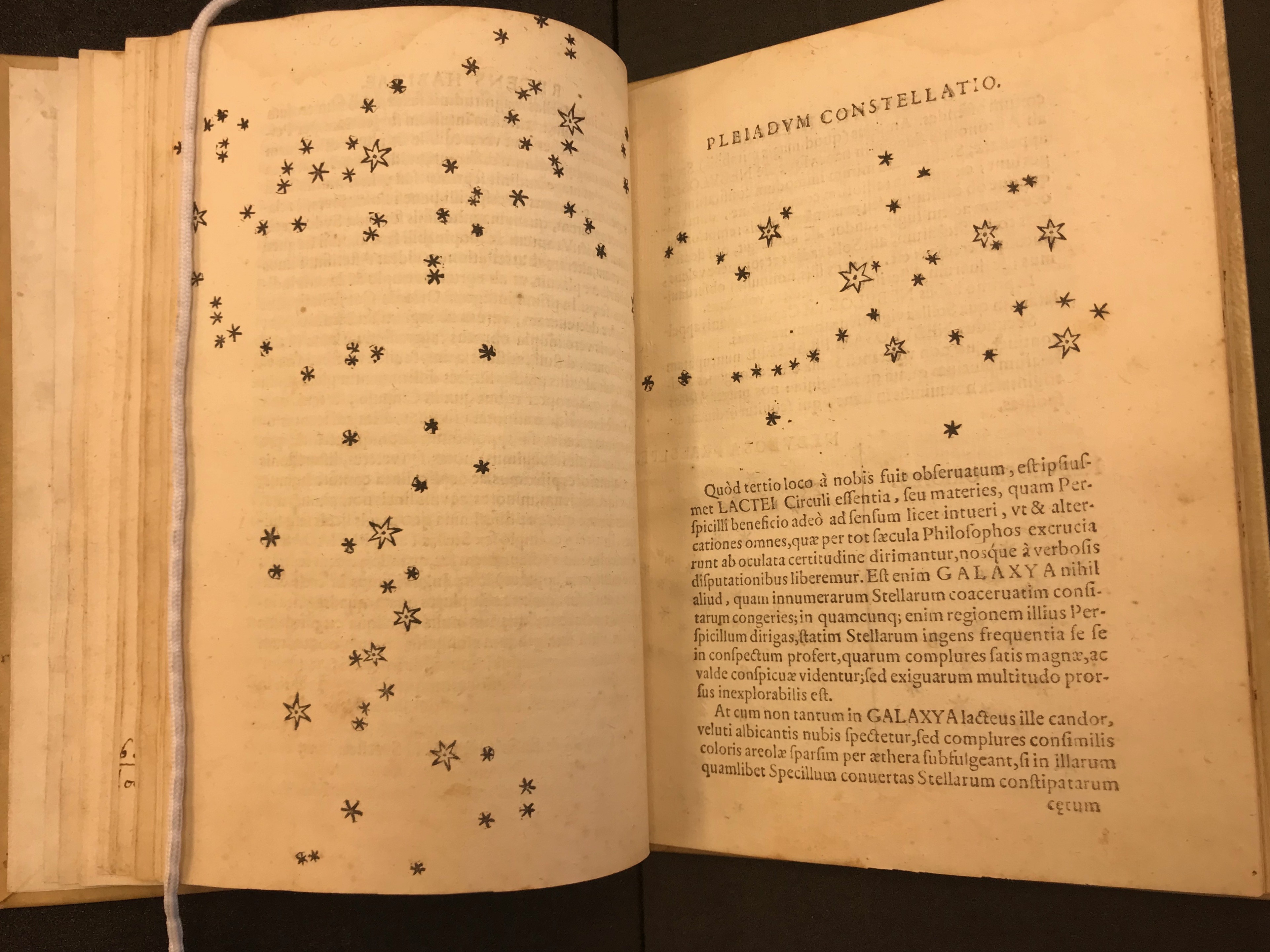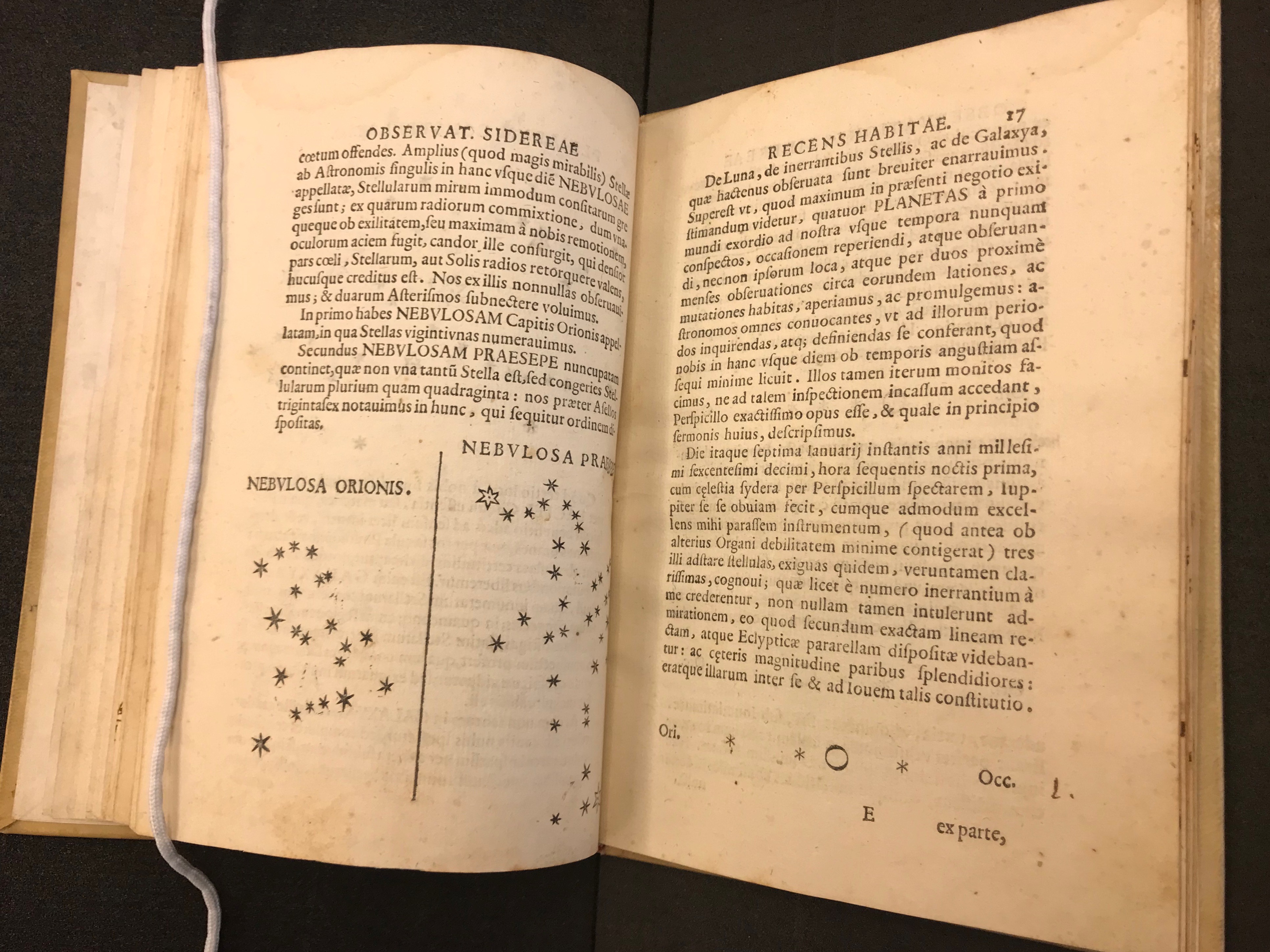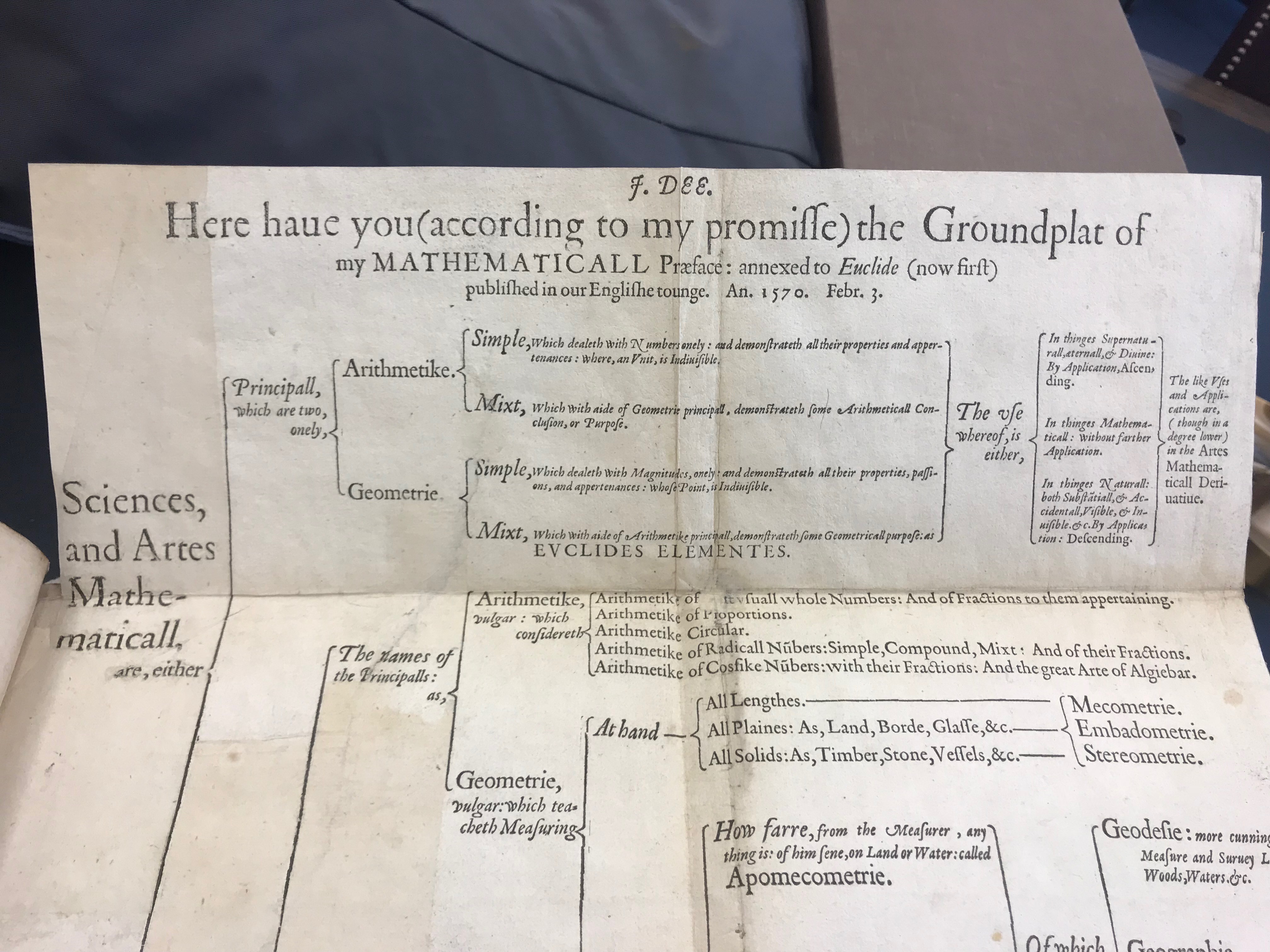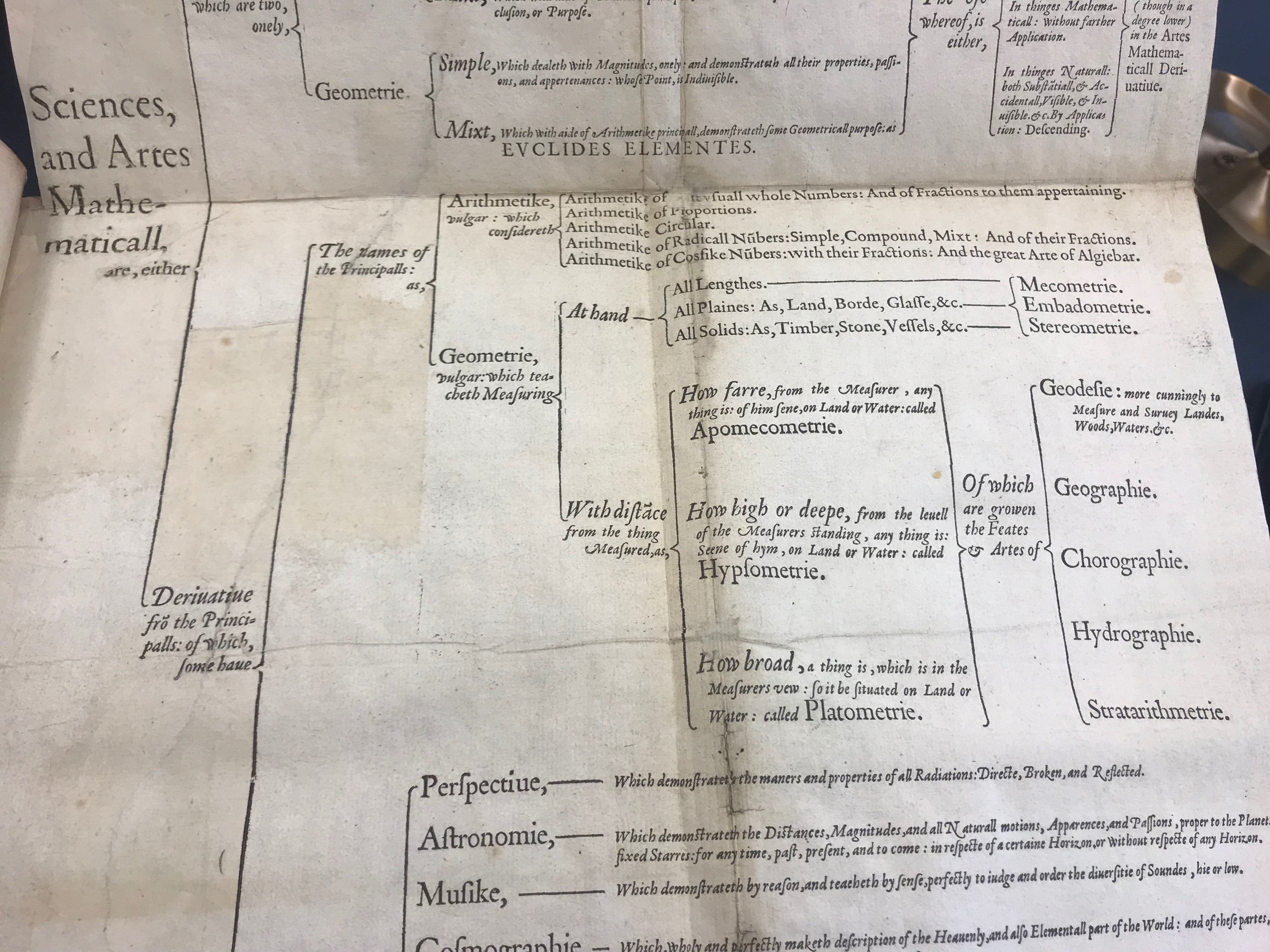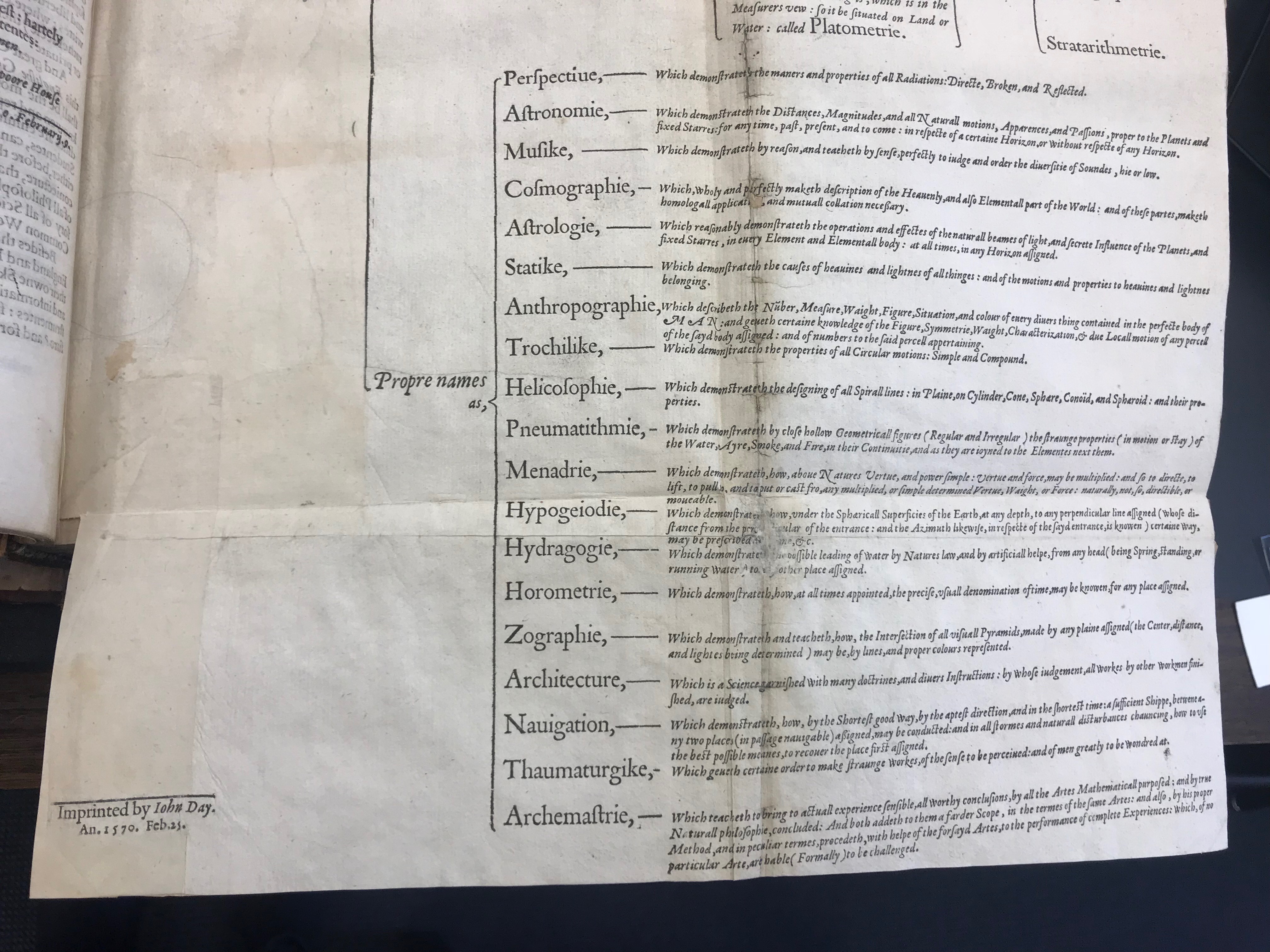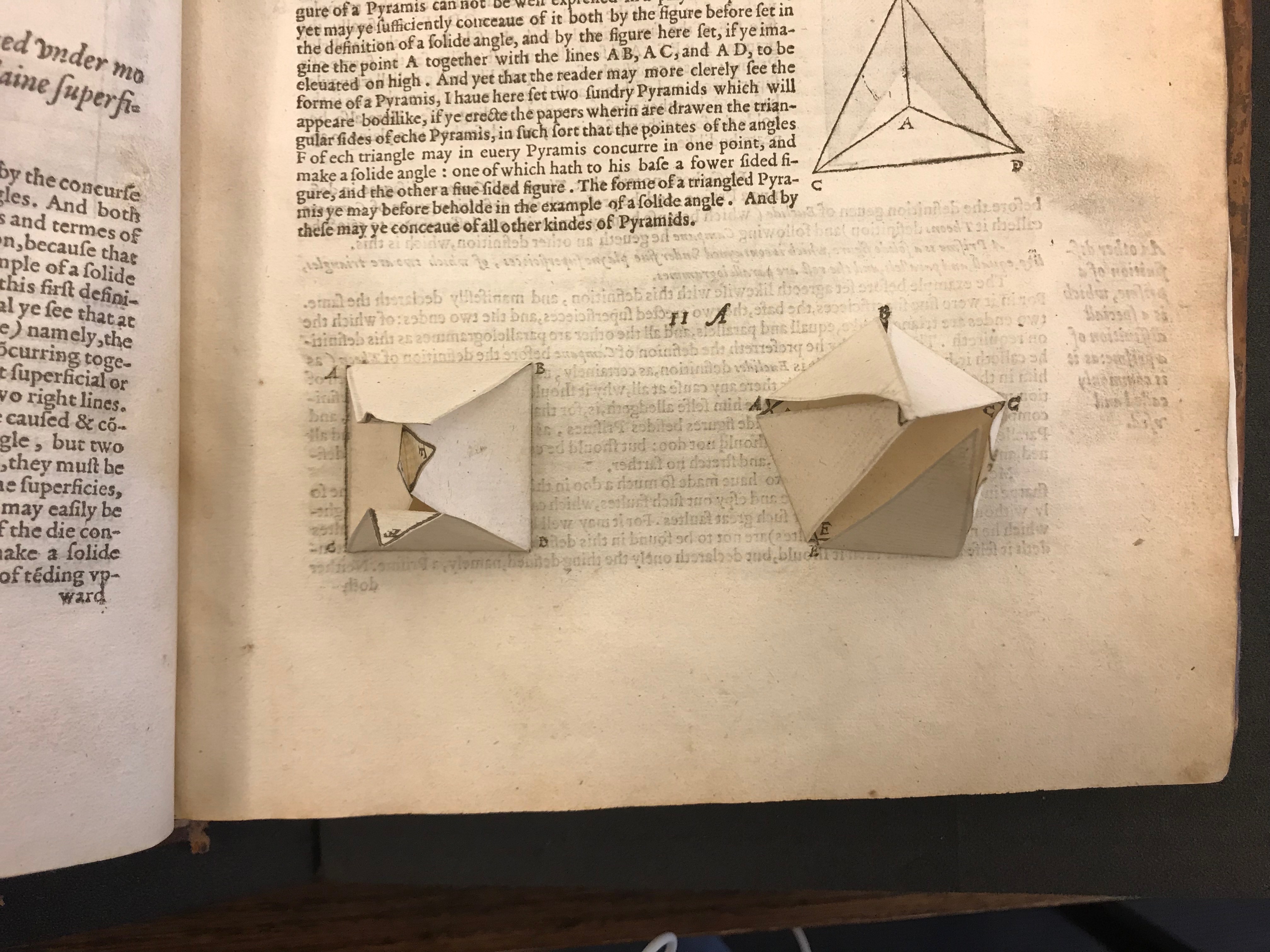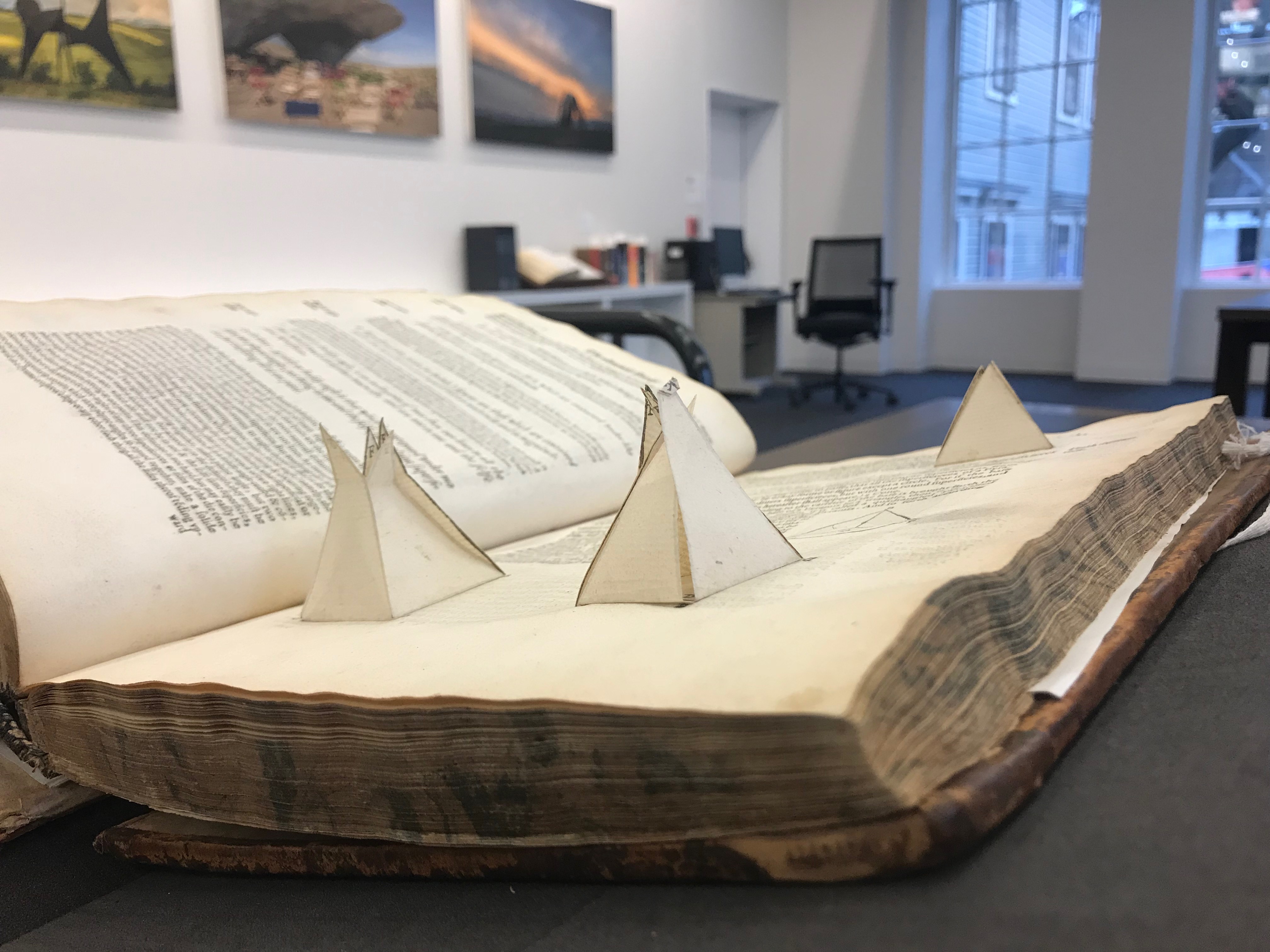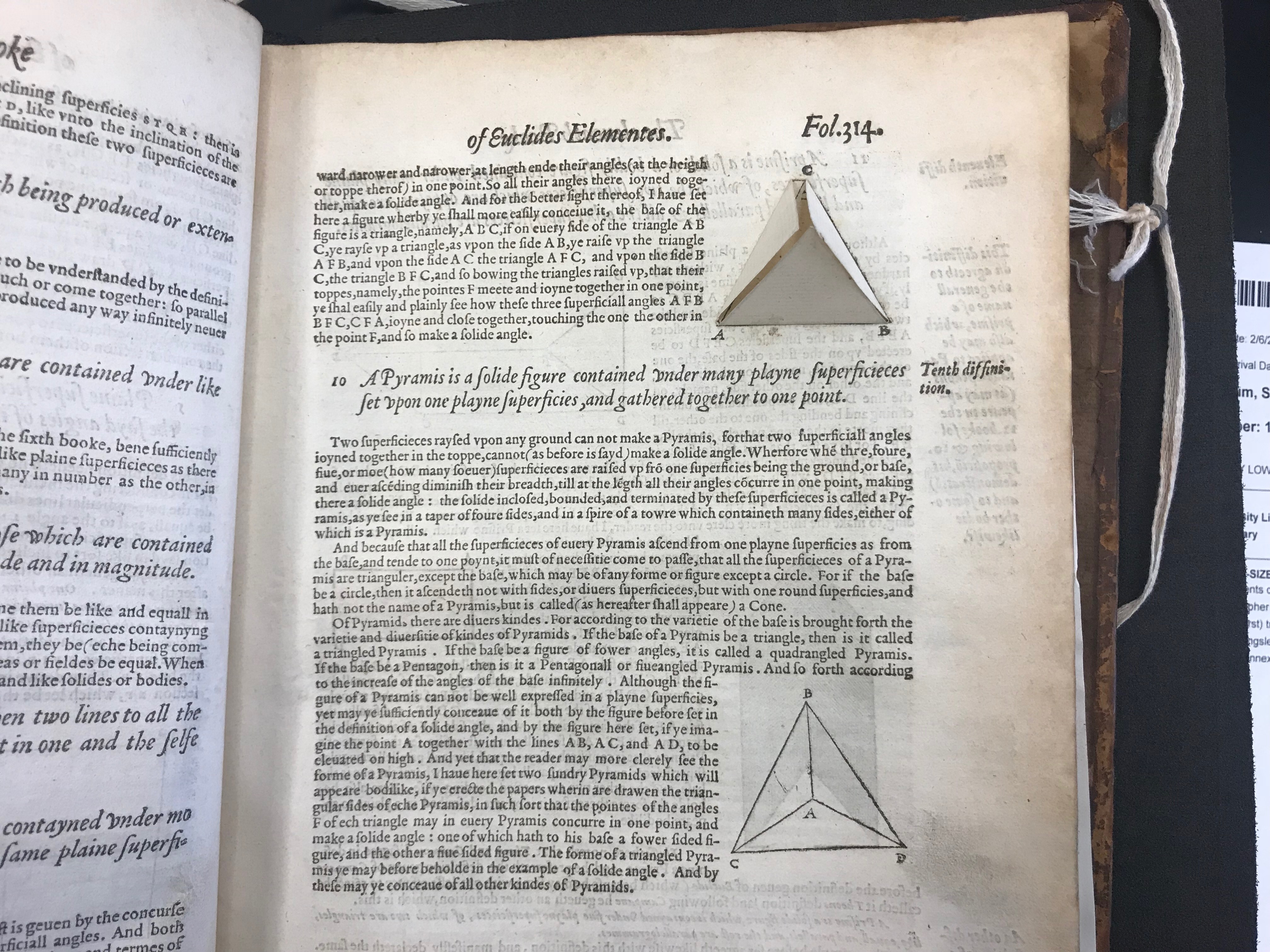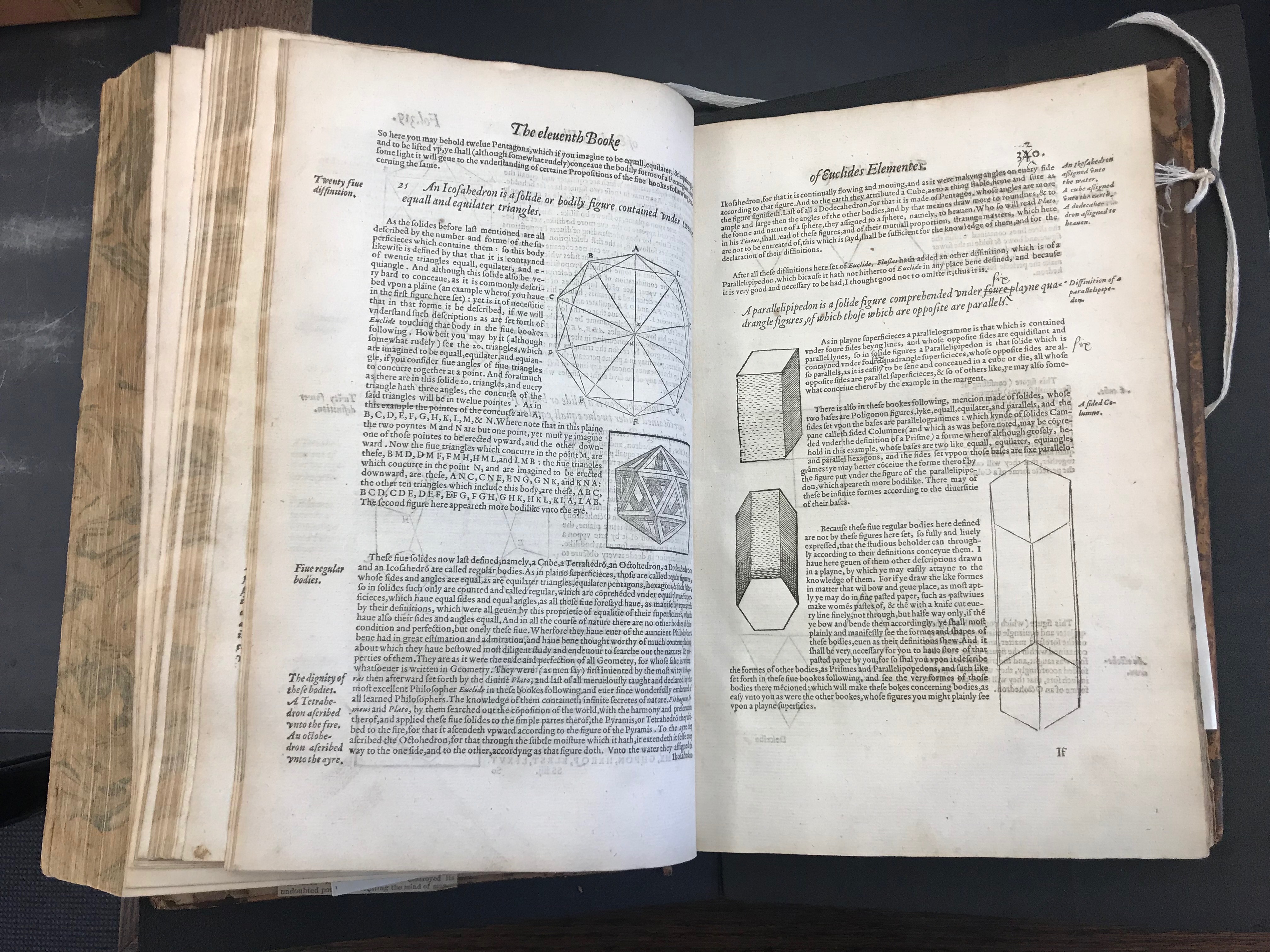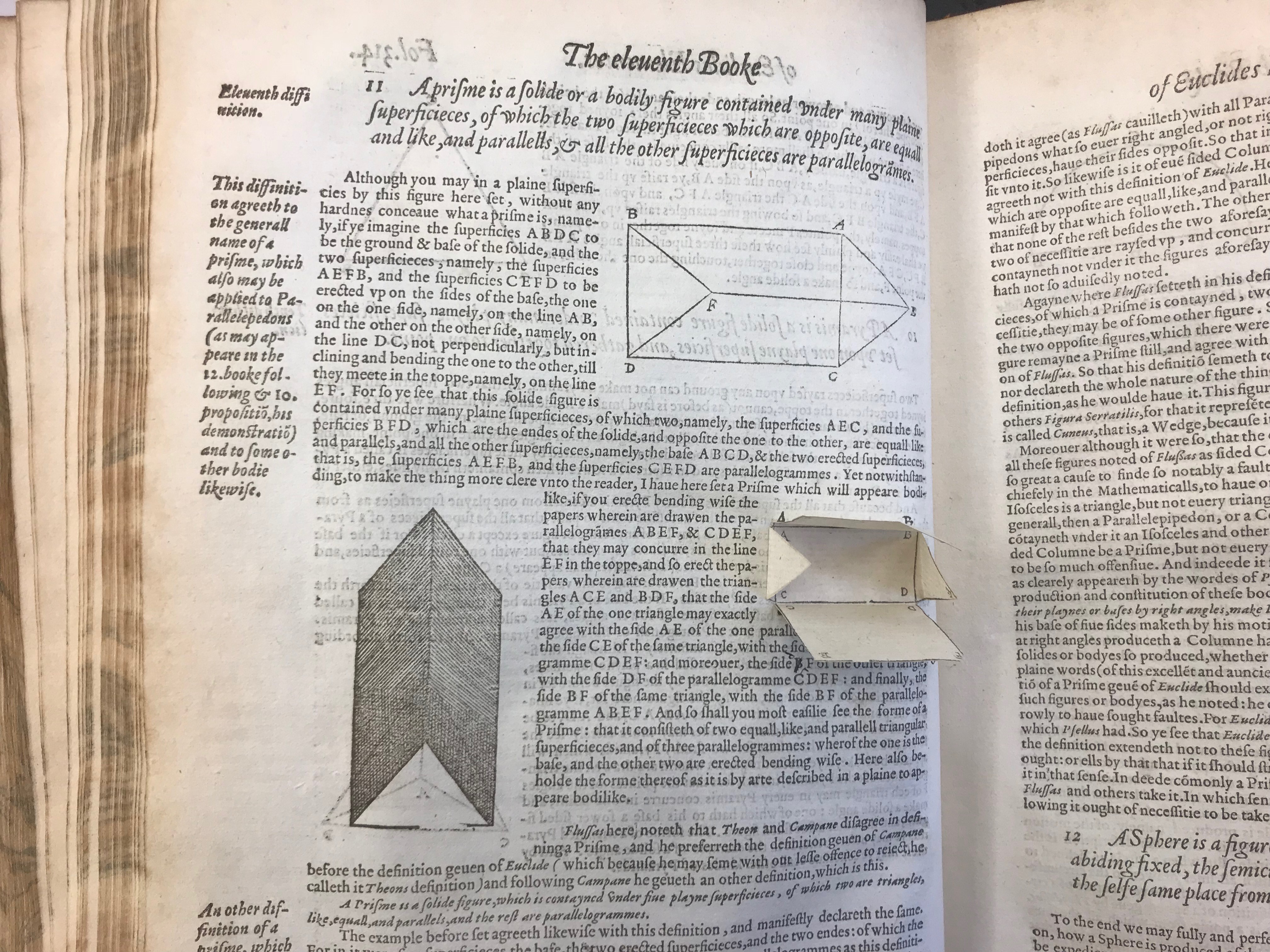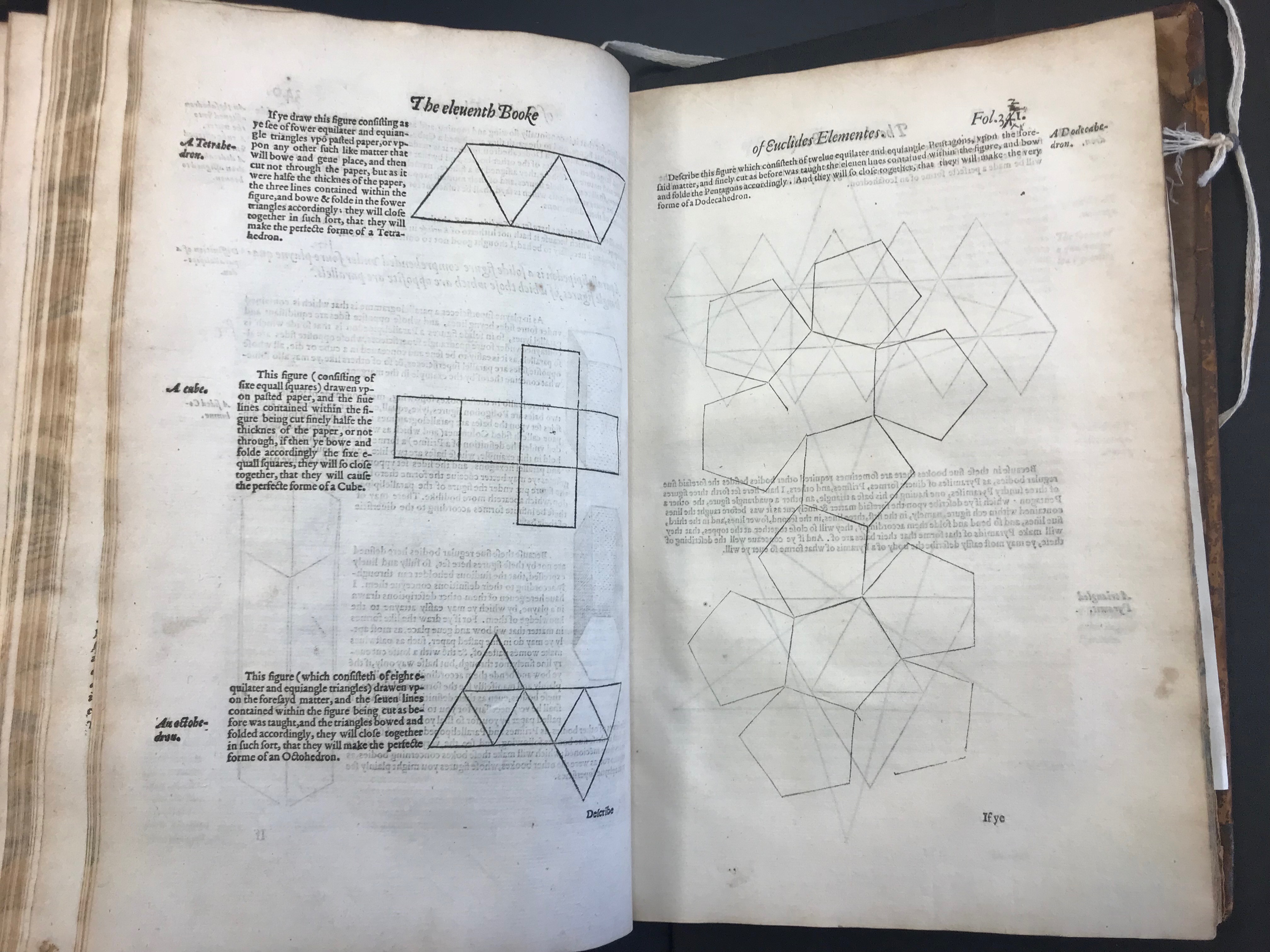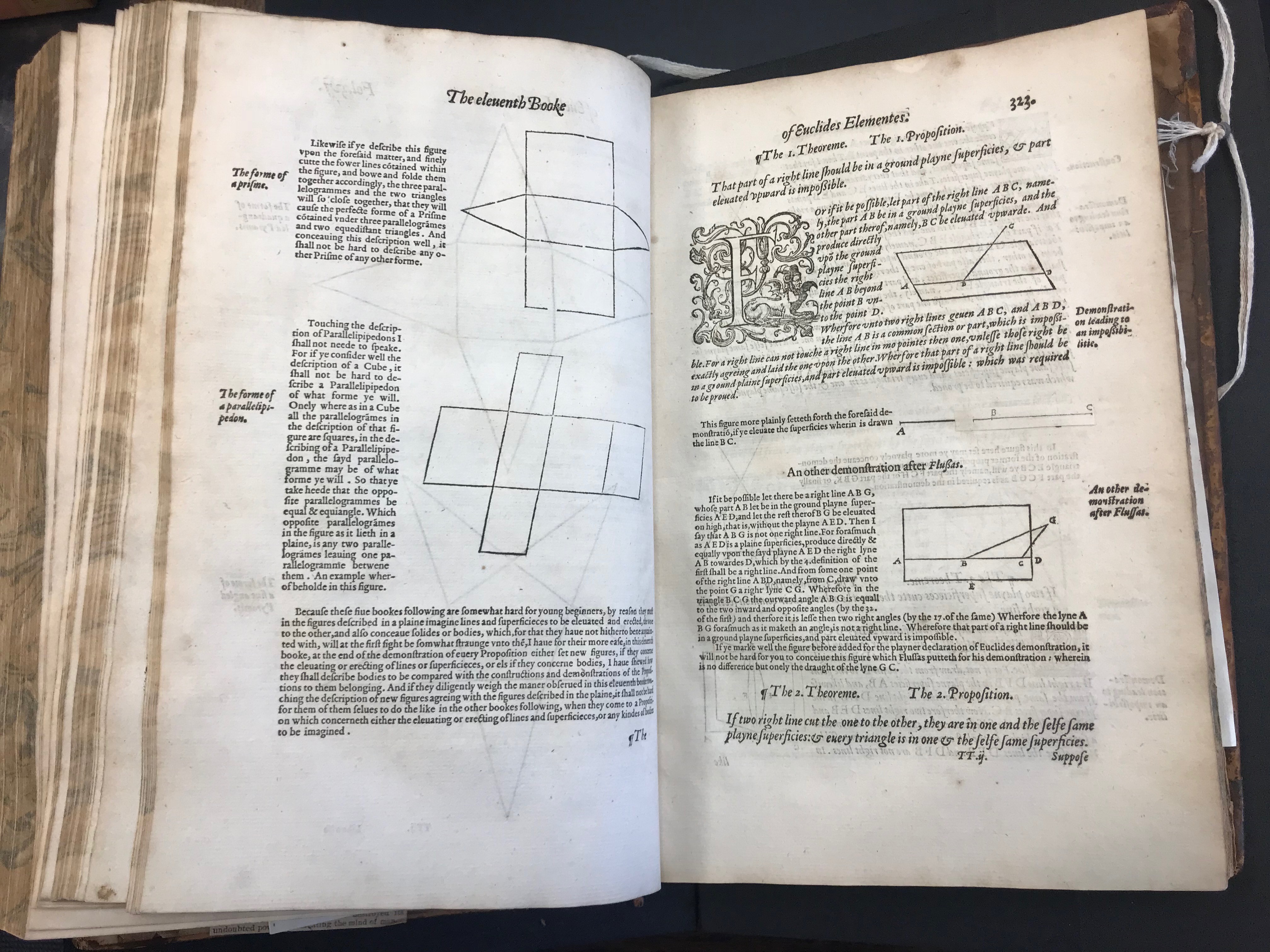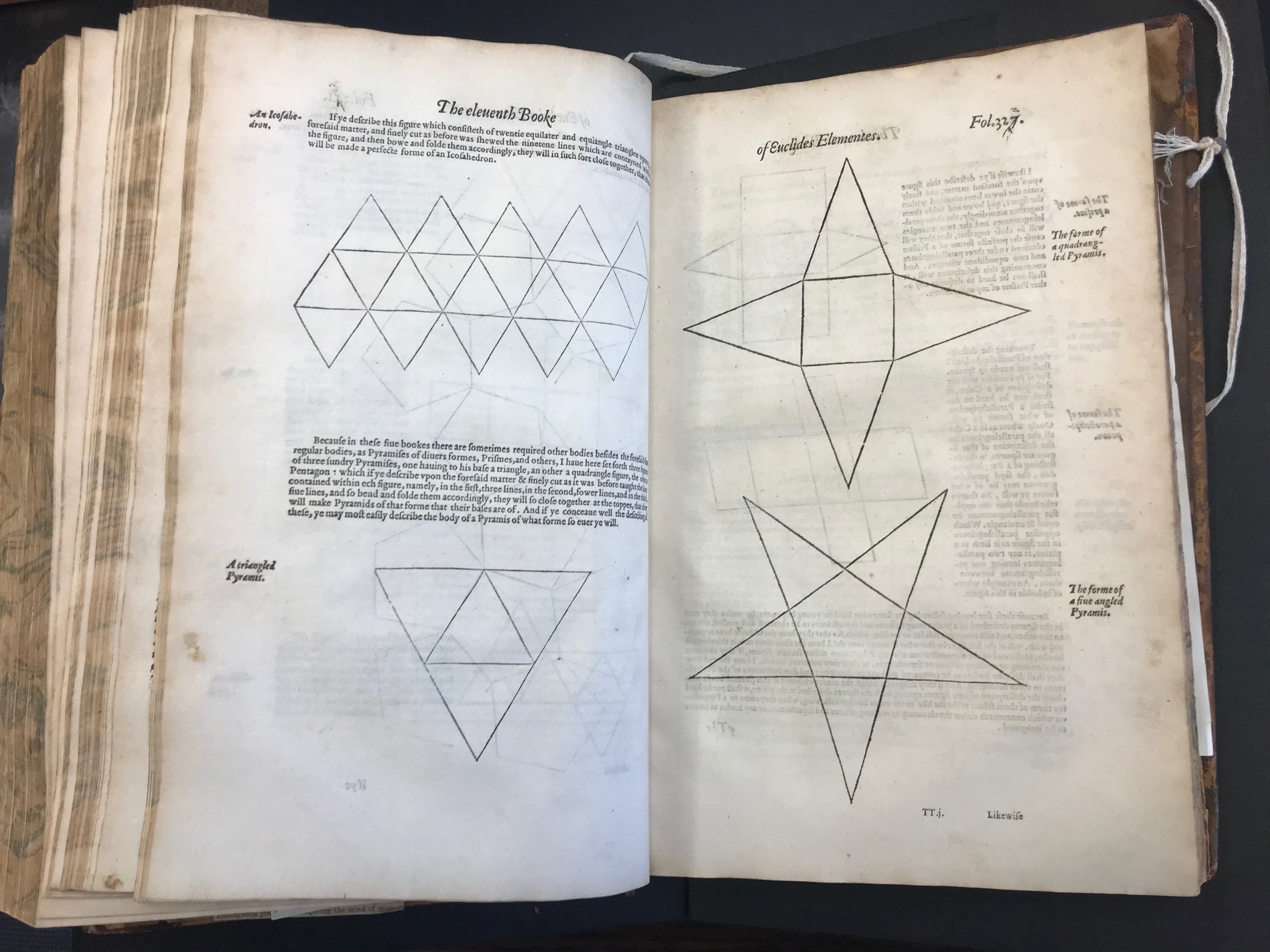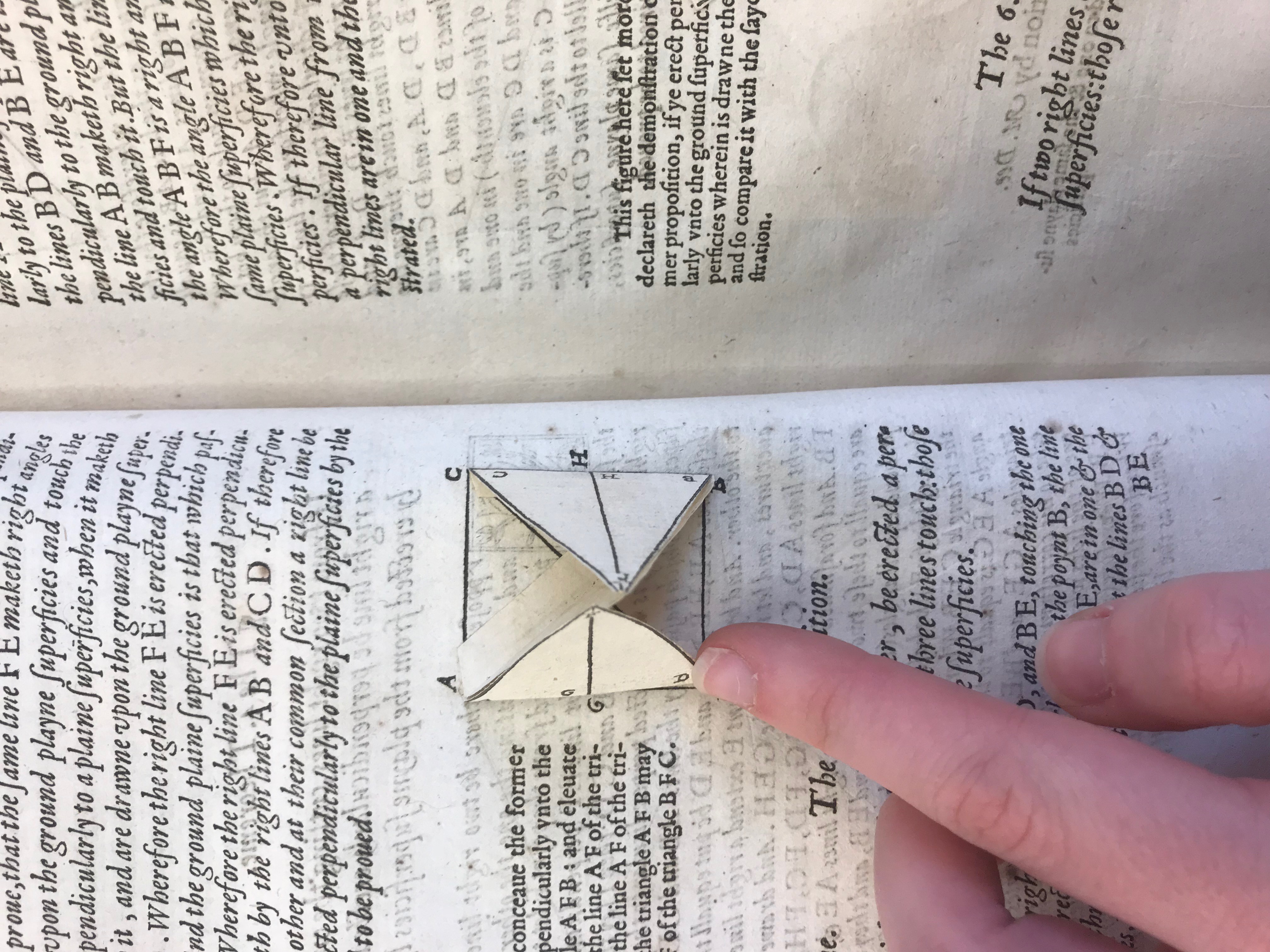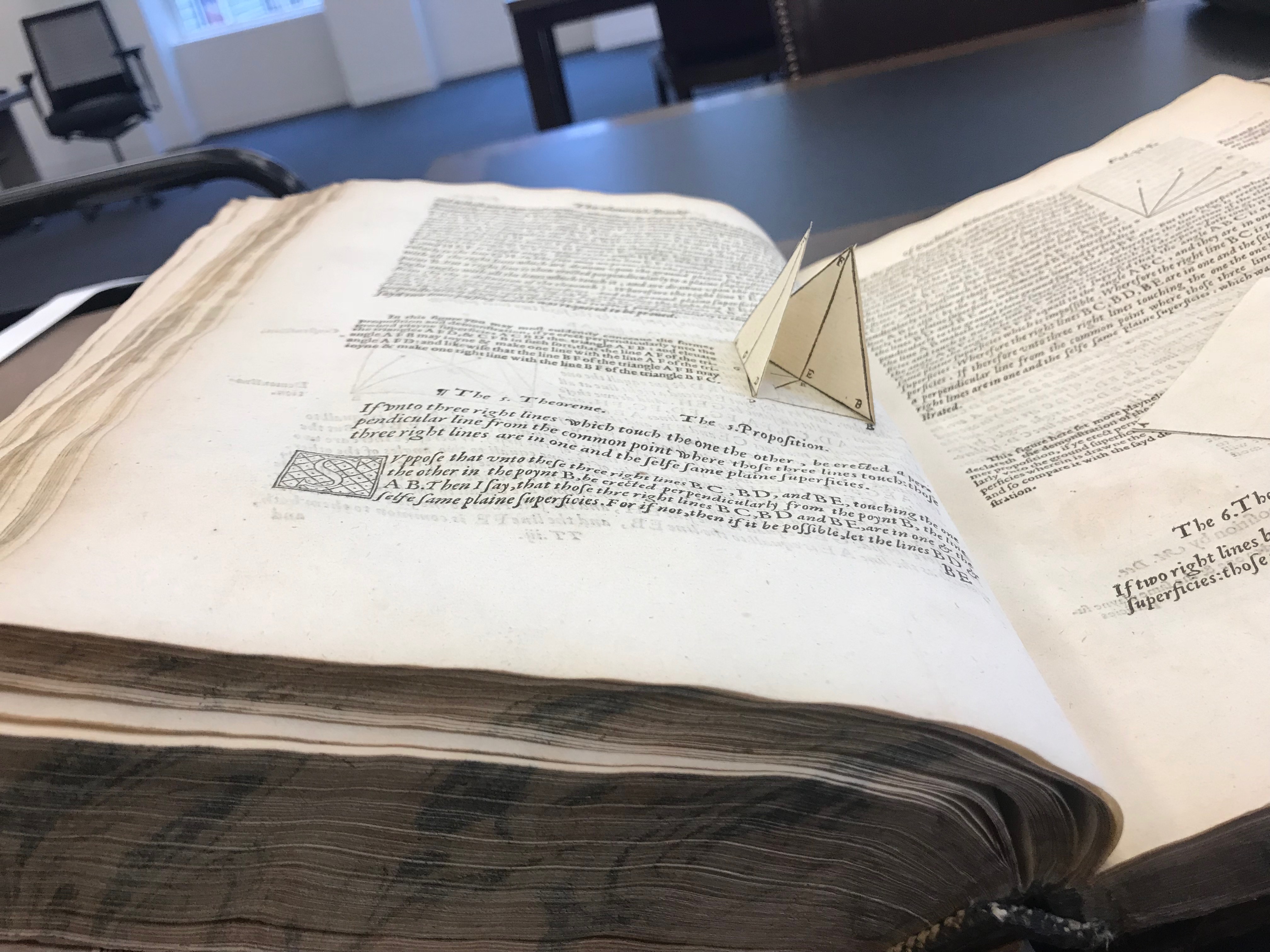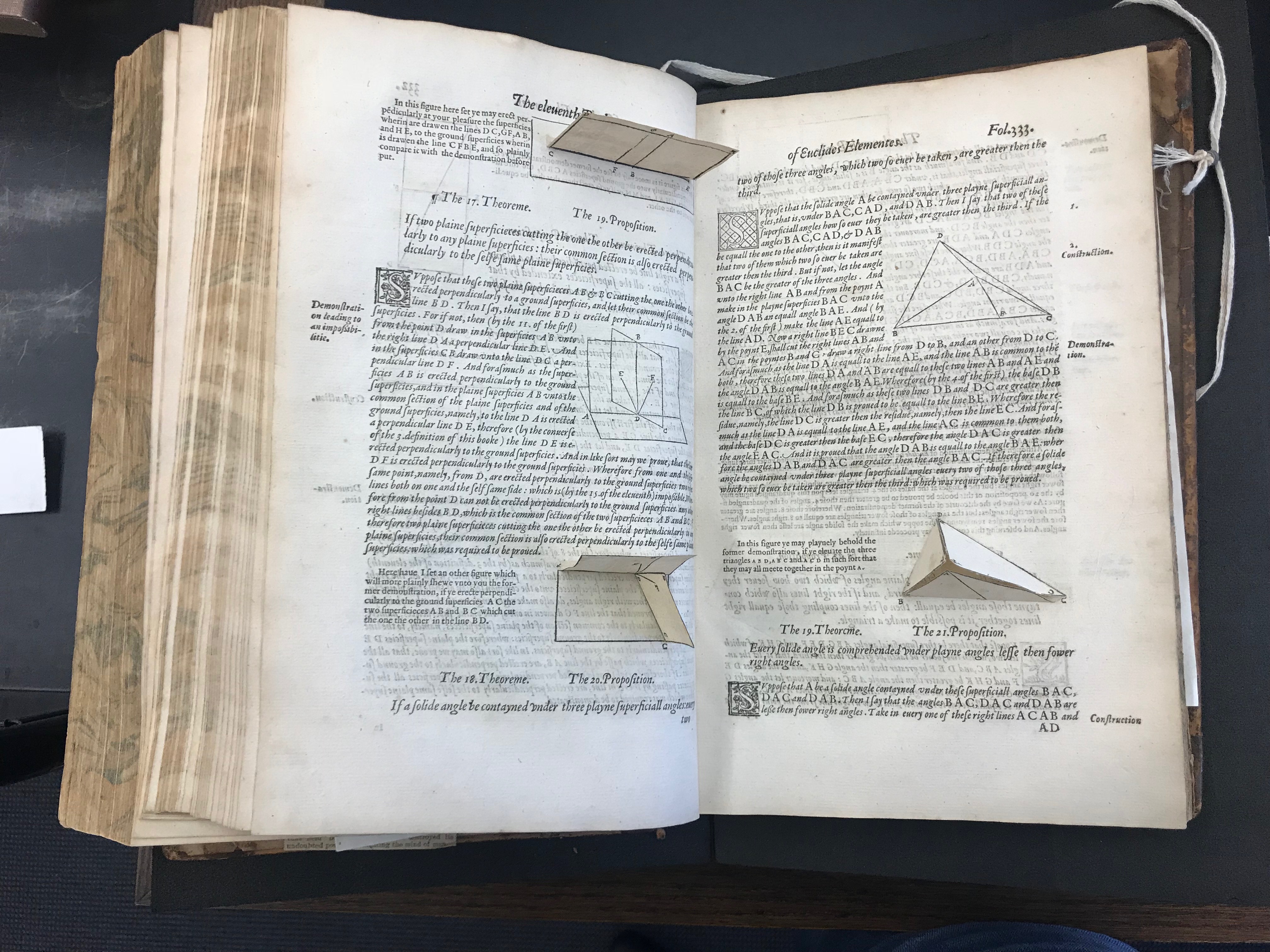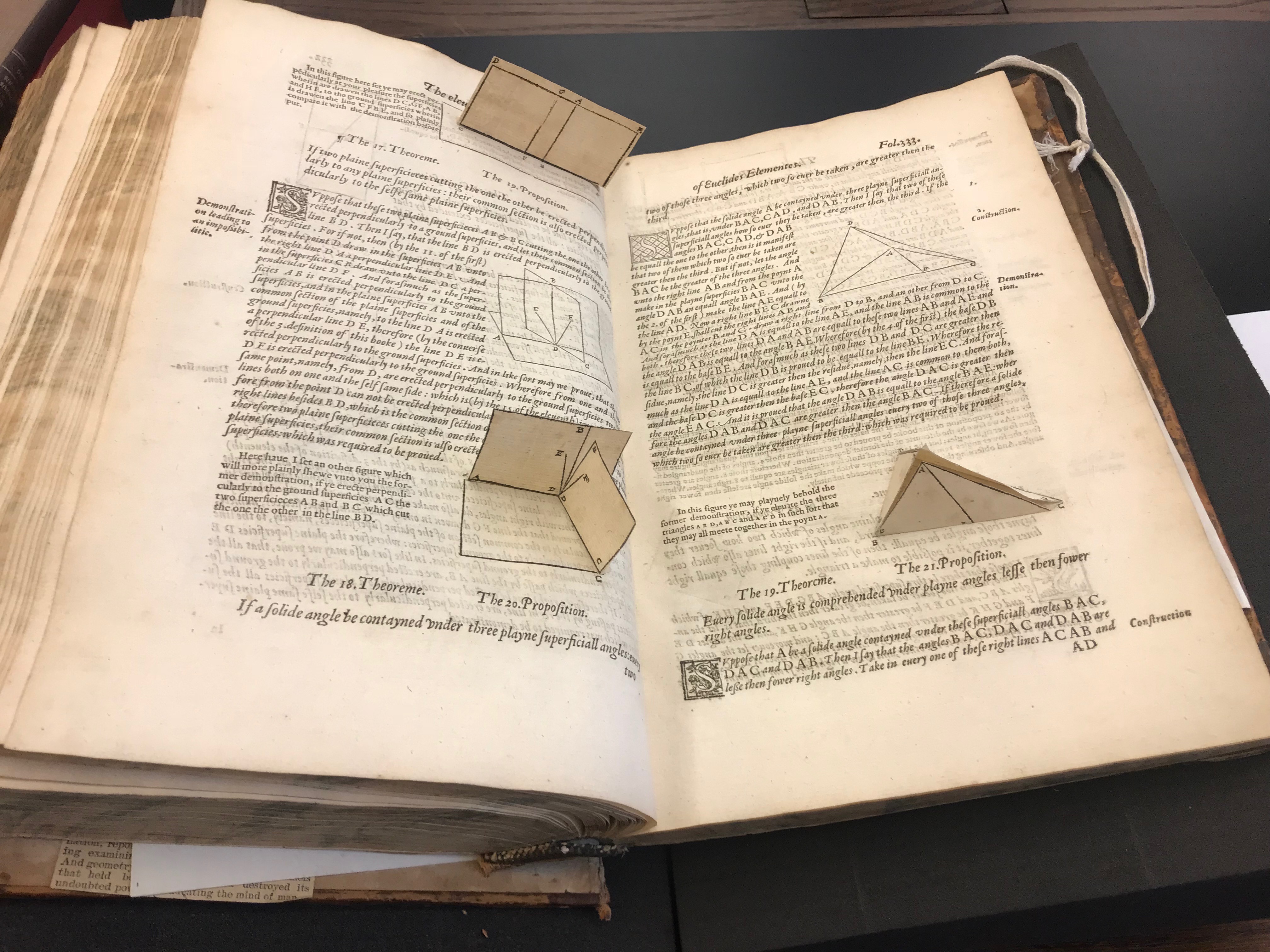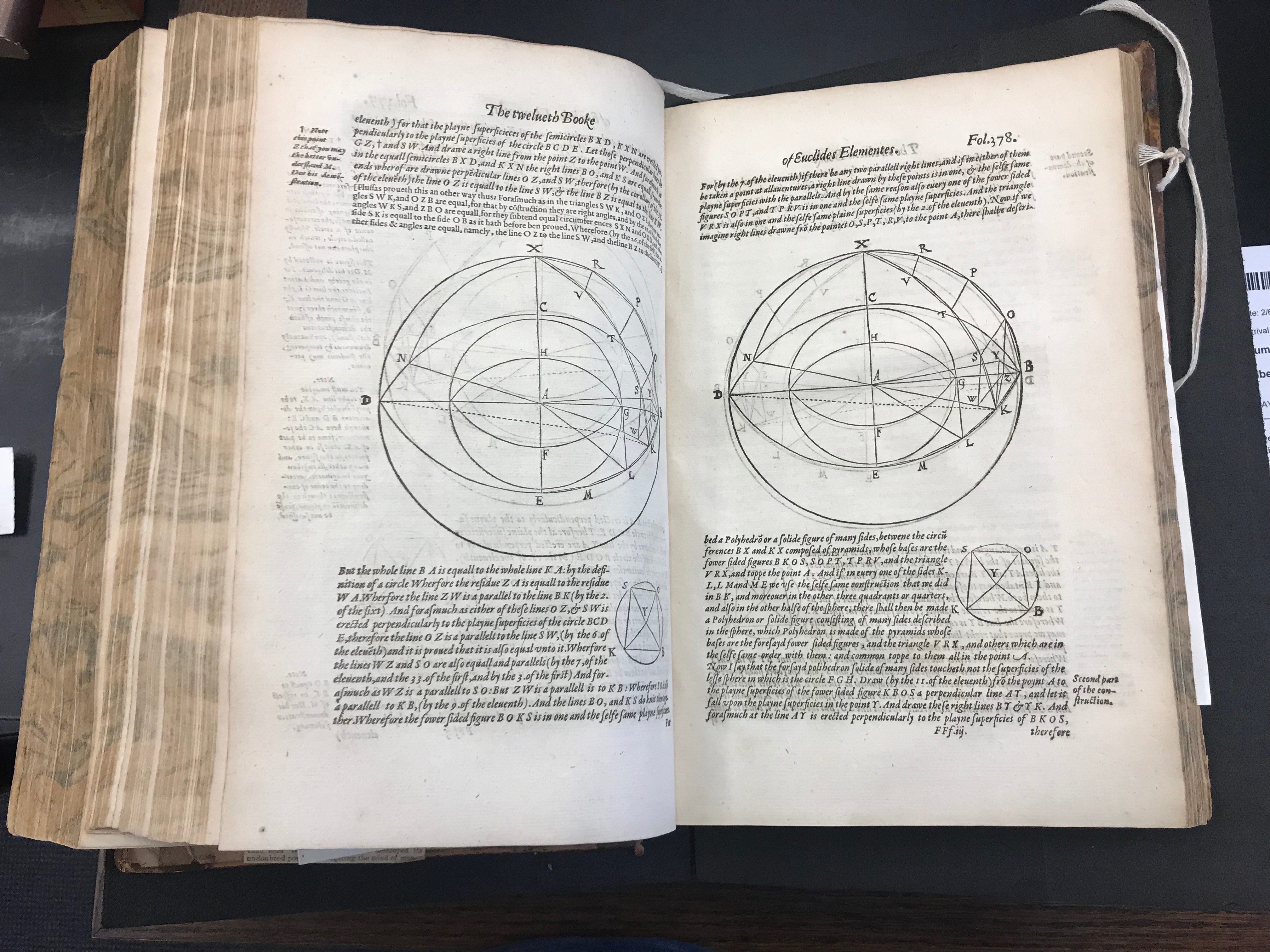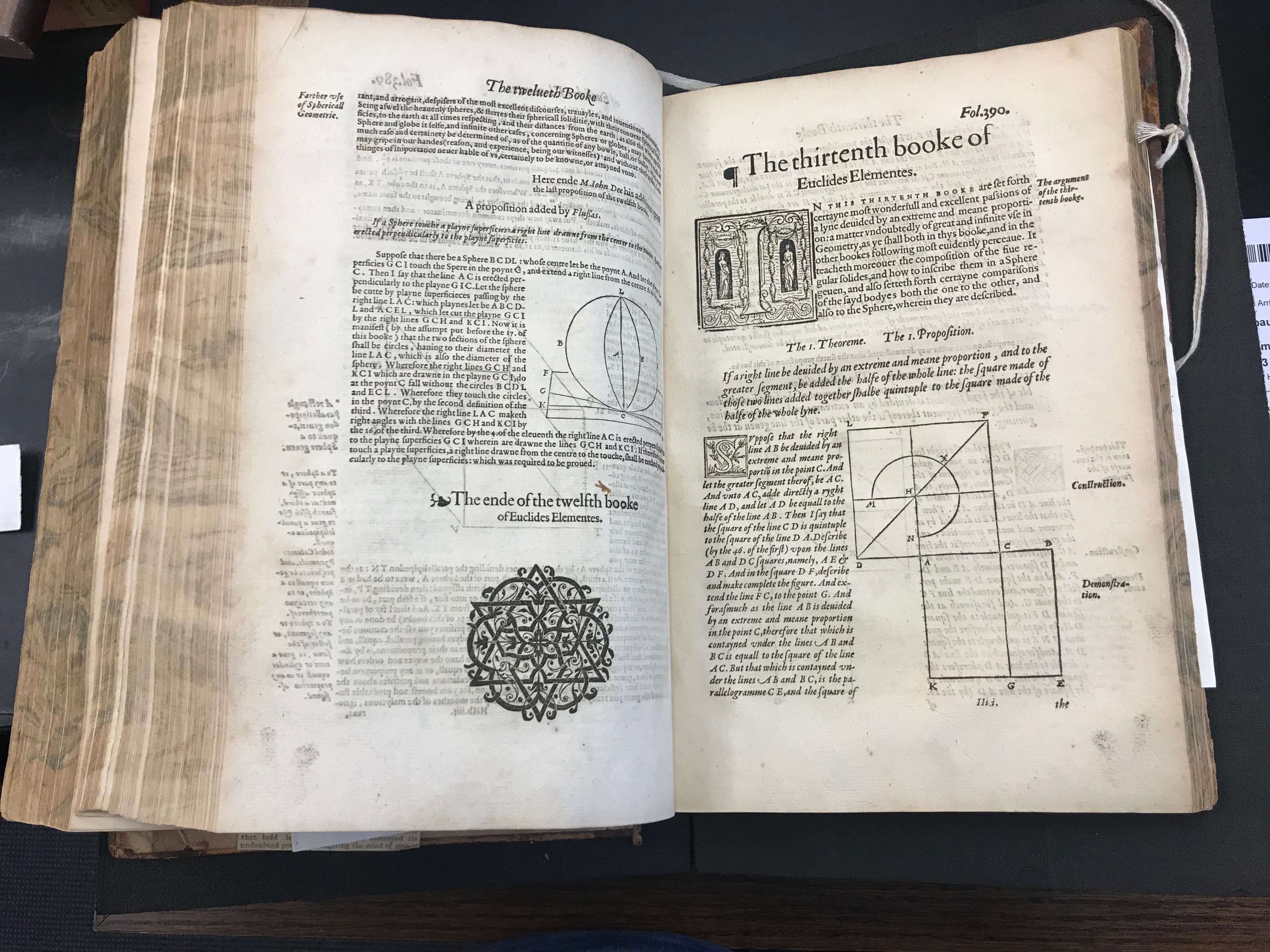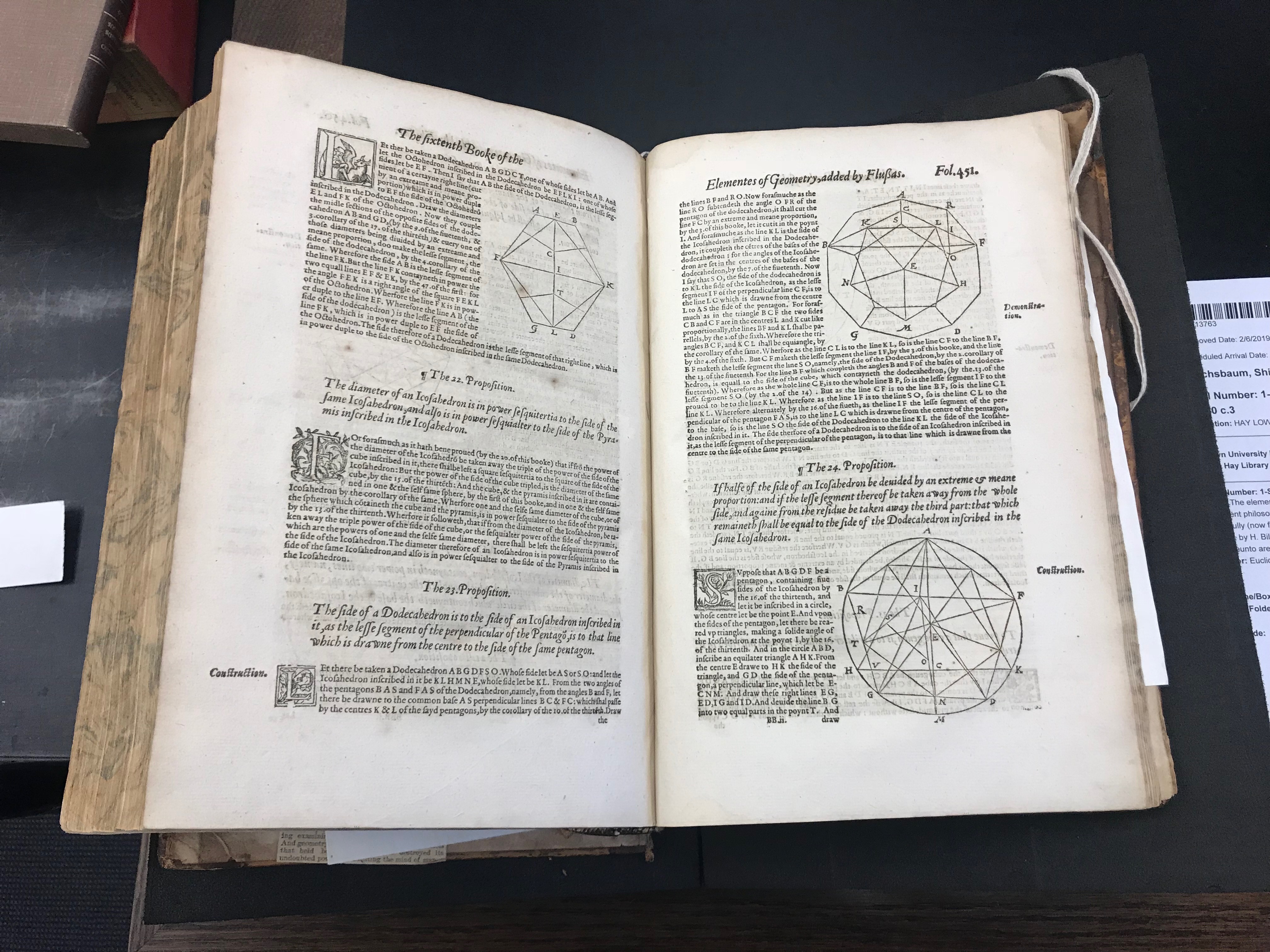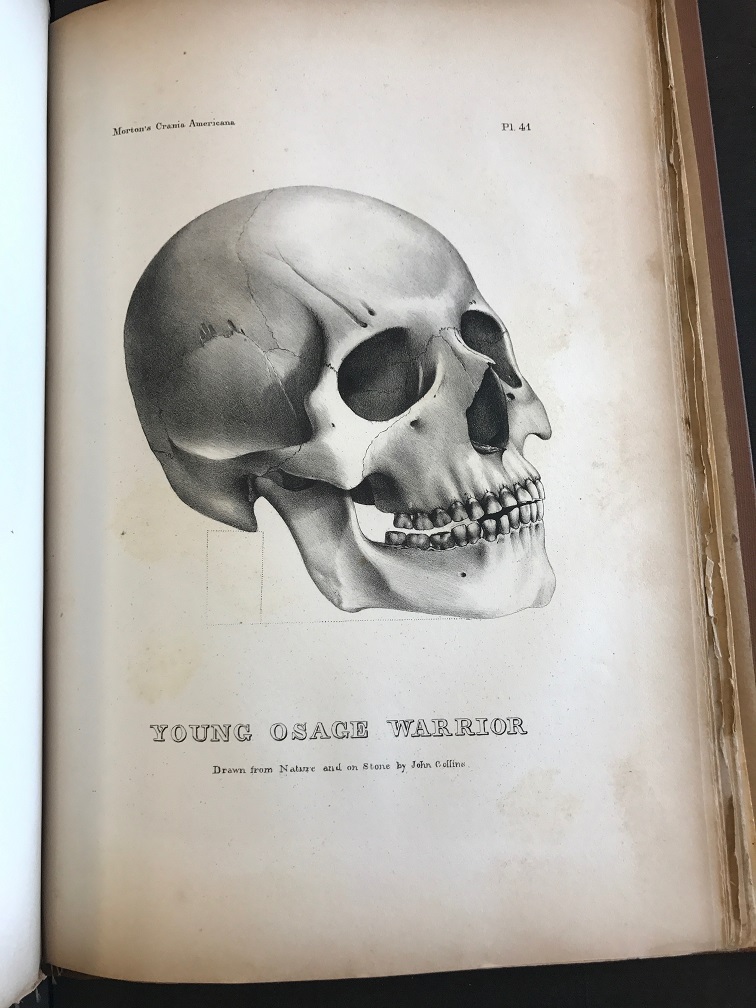
The John Hay houses a large History of Science Collection which includes extensive holdings of old and rare editions of early scientific texts as well as now outdated and pseudoscientific texts. Geographically and temporally broad, the collection includes the Pingree Collection, which focuses on ancient Indic sciences and includes a number of works in Sanskrit covering a range of topics in astronomy, mathematics, and medicine. The Hay is actively working to build holdings on science in the Islamic world, and the library recently acquired an Arabic edition of Kitab al-Qanun, a compendium of medical knowledge compiled by Persian scholar Ibn Sina. The tome was highly influential in Europe and East Asia for centuries.
Particularly strong areas in the collection are mathematics and astronomy, as the collection holds early editions of works by Galileo, Kepler, Tycho Brahe, Newton, and more. This copy of Sidereus Nuncius by Galileo includes the signature of his assistant, Vincenzo Viviani, on the bottom of the title page.
Notable materials include:
- Records of astronomical observations taken in Providence, RI. In the 1800s, Providence astronomers observed the transit of Venus; Transit and Planet Streets by Wickenden Street now commemorate the spot of observation.
- Many editions of Euclid’s Elements of Geometry, including a volume with pop-up polygraphic forms that demonstrate the planar relationships in geographic shapes. Elements was the most popular university text in mathematics for more than 2000 years before the modern era. The 1570 edition, the first edition printed in English, was printed with an additional fifty-five woodcuts on separate sheets that were then attached to the according leaves. The Hay owns many different European editions and printings of the text, including versions in Hebrew and Arabic, and an attempt to print the tome in color.
On the biological and medical side of science, this collection includes early medical texts that were among the first to use illustrations. Some of the anatomical texts in the collection employ advanced imaging techniques, such as color lithography and 3D photography. One such device, a stereoptician viewer, is a gadget now used to view three-dimensional pictures of landscapes, but was initially used to use x-rays.
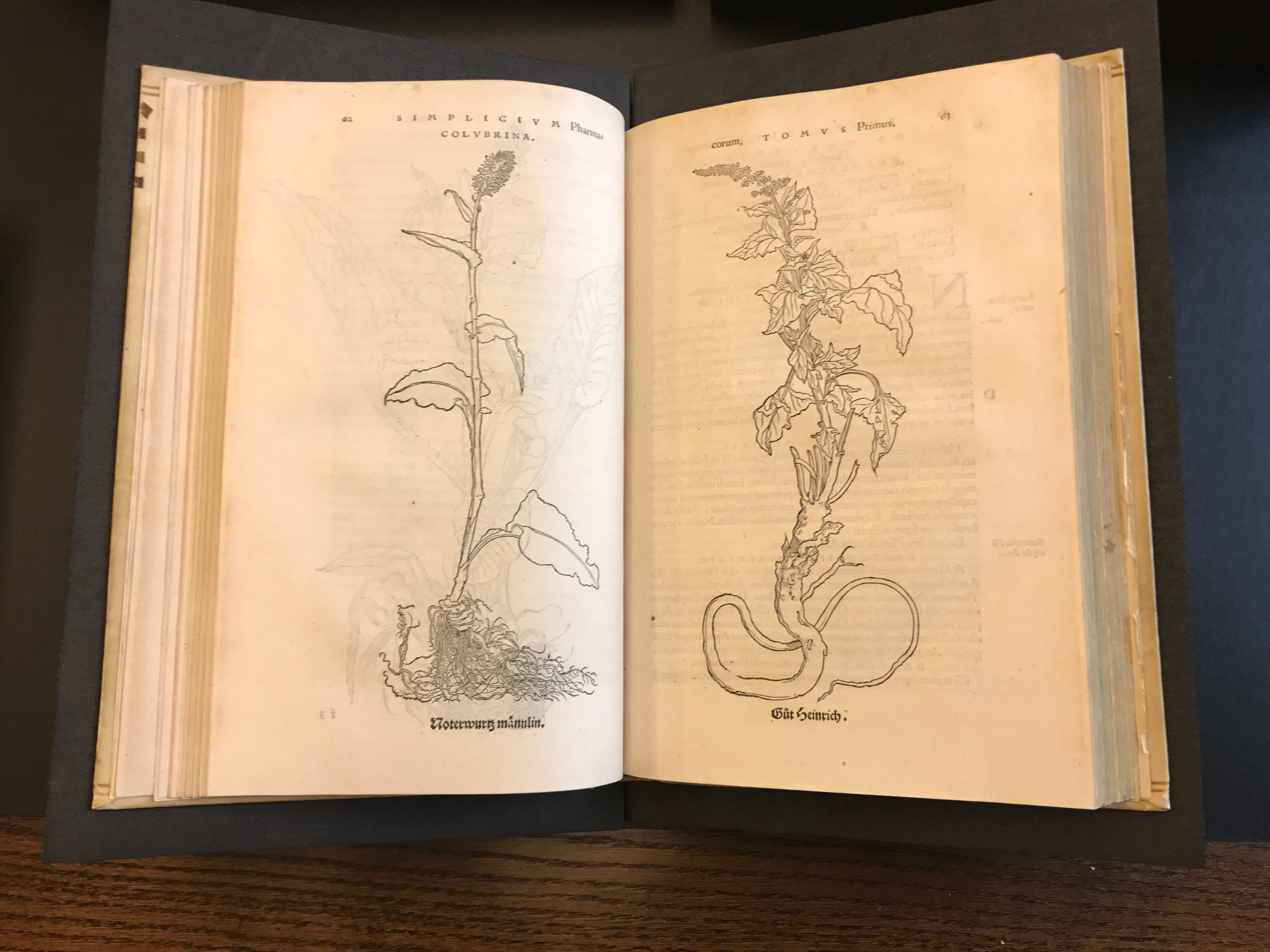
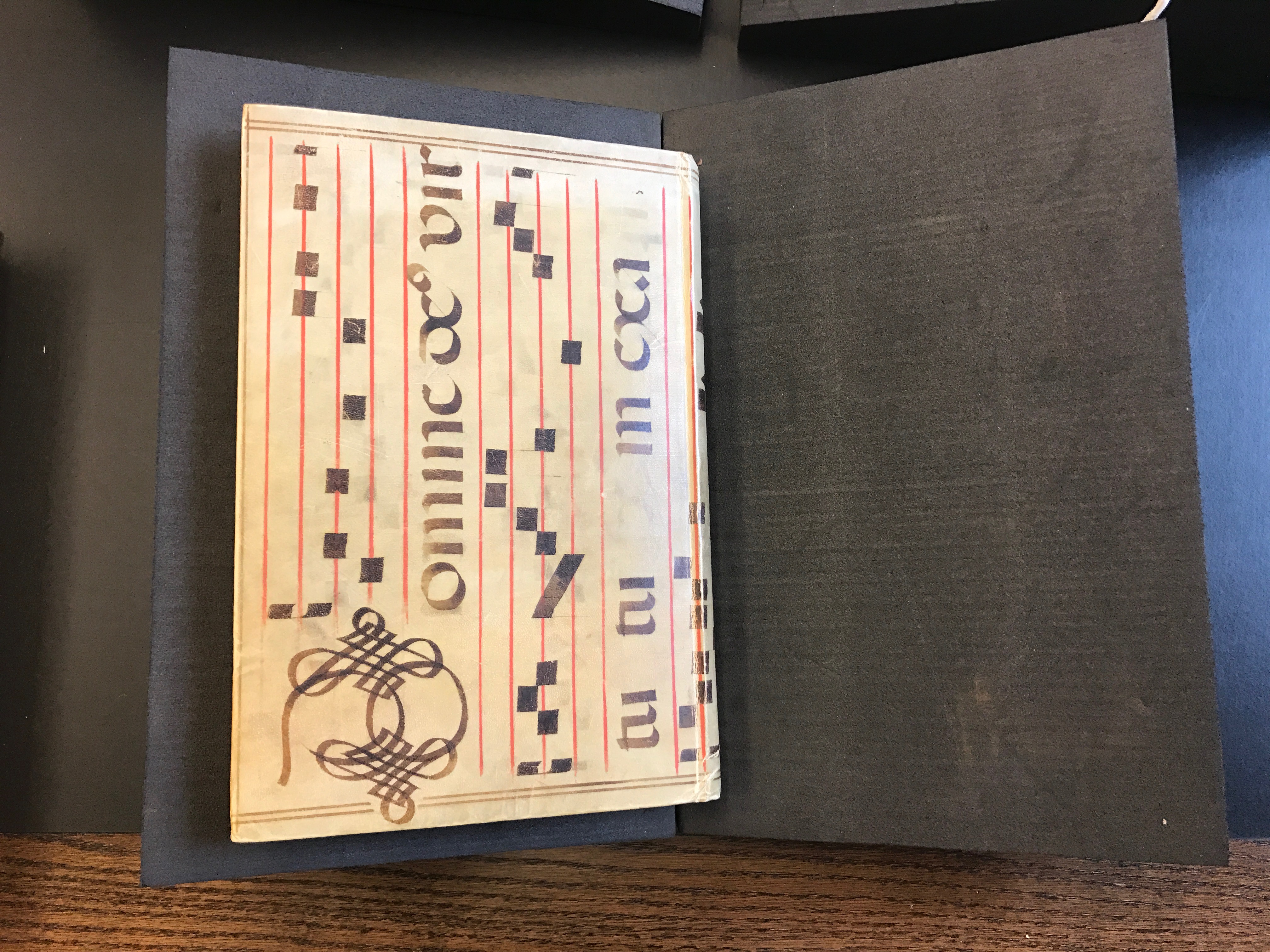
The History of Science Collection additionally has significant collections of herbals, large tomes filled with schematics of various plants, such as Herbarum vivae eicones: ad nature imitationem, printed in 1530 and bound in recycled sheet music.


